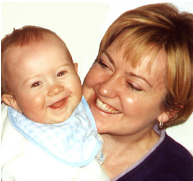The Psychogenic Theory of History
Lloyd deMause
...In my earlier study, "The Evolution of Childhood," I posited that the central mechanism of all historical evolution was psychogenesis, a spontaneous force present in all adult-child relations that allowed adults to relive their own childhood trauma when caring for children and to satisfy the children's needs and strivings for independence somewhat better the second time around.(1) The process is similar to that which occurs in psychotherapy, which allows the reliving of childhood trauma in the transference. When this reliving occurs in historical families, it results in a slow growth in parental love that produces somewhat better childrearing in the next generation. This improvement in childrearing allows new kinds of historical personalities _ I have suggested the word "psychoclasses"_ to emerge. These new psychoclasses produce new directions in the economic and political spheres a few decades after the changes in childrearing. Childrearing innovation, therefore, always precedes political and economic innovation.
In my psychogenic model of historical causation, then, women and children are not merely passive pawns in men's historical chess game, as other historical theories portray them. Women and children are, rather, at the cutting edge of historical change, forming through their interpersonal relations all meaningful innovations of personality _ the new psychoclasses _ which then get translated into new political and economic systems. Since men have not been primary caretakers until recently, they have built their castles and fought their wars, but they have not as profoundly affected the psyches of the next generation _ which end up determining the values of the future far more than the kind of castles that get built or who wins the wars.
Psychogenic Evolution
This "generational pressure" for psychic change is, of course, not unaffected by economic and political conditions. It obviously is more difficult to care for children if a group has a severe famine or if Ghengis Khan invades their territory and kills a lot of mothers. Even so, the causal feedback loop from material to psychological conditions occurs through a rather limited range of traits. Furthermore, advances in childrearing modes can be made in times of economic stagnation _ during the Renaissance, for instance _ as long as the family gives adequate support to the parents, especially mothers, and to the emerging needs of the children.
On the other hand, it sometimes occurs that even in periods of prosperity small changes in the family can massively disturb the upbringing of successive generations of children and thereby produce a major slowdown in progress in the economic and political life of the group. This is particularly true if these family changes affect the crucial mother-daughter relationship and thus change future mothering patterns. For instance, ancient China until the early Christian era was far ahead of Europe in economics, political organization and learning, until the footbinding of women was introduced. This custom required mothers to bind their daughters' feet every night so tightly that the bones of the foot would be broken and the smaller toes forced under the foot, so that the big toe could be used as an erotic fetish by men.(2) Since these little girls cried out in pain every night for several years as their feet were bound, they understandably formed little trust in their caretakers and therefore had little ability to do better as mothers themselves _ thus freezing the historical personality and economic development of the Chinese for the next fifteen hundred years. The same kind of "freezing" of psychogenic and then economic development can be seen in those large areas of Africa which practice clitoridectomy of little girls, a custom that has crippled the sexual life of the 100 million women now living who have been mutilated in this manner.(3)
The central point of this psychogenic theory of history is not that all historical change is reduced to psychological change. Nor is it that only childrearing matters in history. The point, rather, is that since psychic structure must always be passed from generation to generation through the narrow funnel of childhood, a group's childrearing practices are not just one item in a list of equally important cultural traits. They are the very conditions for the transmission and development of all other cultural elements, and they place specific limits upon what can be achieved in the other areas. The amount of child assault present in any culture is one of the most important indices of the cultural level of that group..
(1) DeMause, Foundations, p. 3.
For additional mechanisms accounting for psychohistorical evolution,
see " The Formation of the American Personality Through
Psychospeciation" in Foundations, pp. 105-131; "The
Psychogenic Theory of History " in Foundations, pp. 132-146;
and Lloyd deMause, "The Role of Adaptation and Selection
in Psychohistorical Evolution." The Journal of Psychohistory
16(1989): 355-71.
(2) Howard S. Levy, Chinese Footbinding: The History of a Curious Erotic Custom. London: Neville Spearman, n.d.
(3) Hanny Lightfoot-Klein, Prisoners of Ritual: An Odyssey Into Female Genital Circumcision in Africa . Binghamton, N.Y.: The Haworth Press, 1990; Fran P. Hosken, The Hosken Report: Genital/Sexual Mutilation of Females . Lexington: WIN News, 1979; Tobe Levin, "` Unspeakable Atrocities ': The Psycho-sexual Etiology of Female Genital Mutilation." The Journal of Mind and Behavior 1(1980): 197-210.
This article was excerpted from the keynote speech at The Child
Assault Prevention Training Center of Northern California conference
"Beyond Prevention: The Future of Childhood." - May
1990, and in The Journal of Psychohistory Volume 18, Number
1, Summer 1990.
